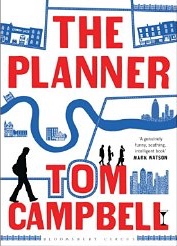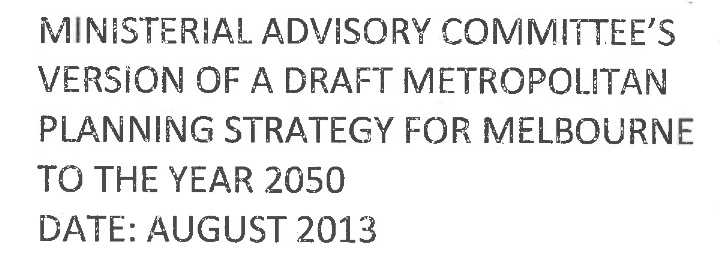
As I mentioned here last year, I have a book coming out later this year looking at media depictions of cities and towns, and how these influence urban planning practice, called Movie Towns and Sitcom Suburbs: Building Hollywood’s Ideal Communities. I’m currently reviewing the publisher’s copy-edit, and things are on track for the planned release in October. What’s more, there’s now cover art and the book is available for pre-order on Amazon. So it’s all starting to feel pretty real. It therefore seemed like a good moment to add some details of what the book involves on this page. You can see those details (including the cover and a detailed outline) by visiting www.sterow.com/movietowns.
Urban Planning

I am speaking tonight at a PIA pre-congress event, and this post should appear by the magic of WordPress as I’m speaking. I thought it may be worth providing links to a few of the pieces of writing that explore things I touch on in my presentation.
It feels like we have gotten stuck when it comes to planning system reform.
Those with a memory of the pre-VPP system, or a passing familiarity with some other jurisdictions, will have some appreciation of our system’s core strengths. We take for granted a consistency across councils, a focus on plain English (albeit a very special VPP brand of it), a logical hierarchy of policy frameworks, and a certain rigour of approach. The VPPs were, and remain, an astonishing achievement.
At the same time, however, we never quite seem to have properly resolved the teething problems. Issues that were quickly apparent – the circuitous double-negative cross referencing, the fetishisation of vague and indecisive language, and a structural bias towards excessive permit triggers – have lingered. The various reviews of the system that have occurred tended to get stuck on a few responses (code assessment, the “three-speed” zones) which came to dominate the reform agenda for a decade and have only come to resolution last year. Other worthwhile reviews (on issues like parking, advertising signs and heritage controls) were ineffectual, only partly implemented, or disappeared completely.
Back in 2008, when we were working on Planning News, Tim Westcott Gilda Di Vincenzo and I put together a “Planning Nerd Christmas Gift Guide.” It proved unexpectedly popular – which in Planning News terms roughly means somebody once mentioned to us that they had read it – so we repeated the exercise in 2009. It seemed like a good concept to dust off, so I have updated those old entries and added new gifts to create a new 2014 version. Thanks to Gilda and Tim for their contribution to the original.
This Christmas season, planners and their kin everywhere will face the eternal question: what to buy for the planning nerd who has everything? Once that special planner in your life has all the PIA merchandise, their own copy of ShadowDraw, and a scale ruler, what else is there? Well, we’re here to help.
The Planner by Tom Campbell
Planners have it rough in popular culture. There’s the planner from the first couple of seasons of Parks and Recreation, Chris Haywood’s dodgy builder / planner in Grass Roots, and then… well, aspiring planner Steven Coren from Seinfeld. However that may be about about to change with the recent publication of Tom Campbell’s The Planner, which may yet do for planners what Ayn Rand’s The Fountainhead did for architects and right-wing nutcases.
It follows the life of a young planner in London who is having something of an existential crisis, told in a style that is part Nick Hornby, part Sir Peter Hall. It’s a very entertaining read, full of good one-liners about the life of a planner and a range of unflattering portraits of London.
Availability: You can support local retailing by getting it from Readings or alternately go through Amazon (who do have it for Kindle).
 I am quoted in this Age story on the original Advisory Committee draft of Plan Melbourne, which has now been released under Freedom of Information laws after an application by former Labor staffer Andrew Herington. The full draft can be found here.
I am quoted in this Age story on the original Advisory Committee draft of Plan Melbourne, which has now been released under Freedom of Information laws after an application by former Labor staffer Andrew Herington. The full draft can be found here.
I didn’t have long to review the documents so my comments were quite high-level, but it doesn’t take long comparing the documents to get a sense of the kinds of changes made. The Departmental versions (the May 2014 final, and the October 2013 draft) are broadly similar but strip a lot of the detail out: there’s an all-pervasive softening of the language. The Advisory Committee draft is not perfect either – they were working within a highly problematic process that had, amongst other things, been largely pre-empted by other policy announcements – but it is certainly a more serious policy document.
Hopefully its release will allow more complete and detailed analysis of where the changes were made, and give some insight into the journey from strategy to coffee table book.

It’s an interesting moment for the planning reform agenda in Victoria, and not just because of a possible change of government.
This year we have seen two key planning reforms rolled out, with the new residential zones and VicSmart both reaching the climactic phase of extended gestations. I have previously argued – here and here – that both have been problematic, but those concerns are secondary to my purpose here. What’s more important is that the ideas of code assessment and “three-speed” zones have dominated discussion about planning reform in Victoria for most of the last decade. Across multiple reviews variations on these ideas have bobbed up repeatedly as the solution to our problems.
Now both are done (even if code assessment morphed into something different in VicSmart.) And whatever you think of these reforms, either as conceived or as in fact implemented, we now have an opportunity to outline some new directions.

This article was written for (and as far as I know will be appearing in) the May 2014 Planning News. As it says, it is a response Liz Johnstone’s article “Stop Panning Planning” in the April 2014 issue.
Readers of Planning News will have read Liz Johnstone’s Executive Officer Report in last month’s magazine, endorsed by Brett Davis’ President’s column, which suggested that scaremongering was occurring by opponents of the new residential zones, and that the potential negative impacts of the rollout were greatly exaggerated.
There is no doubt that there is inaccurate reporting going on: the complexity of planning challenges the media’s ability to carry a coherent debate. I also agree with Liz that many of those who are suddenly vocal are, as she put it, the “beneficiaries of ambiguity.” (My own personal version of this frustration is that many of those most agitated about the new zones were silent throughout the assault on activity centre policy though amendment VC88 and the new commercial and industrial zones – I wish they would find a voice on that even more egregious example of #badplanning). It is also true that the areas in which problems occur may be outweighed, in sheer numbers, by areas in which we see a largely neutral rollover to the General Residential Zone.
Nevertheless, I am troubled on a number of fronts with the process surrounding the implementation of the new zones. I believe that there are many planners expressing legitimate concerns, and that these don’t amount to hysterical “Henny Penny” style alarmism. I am concerned that Liz and Brett’s pieces may have created the impression that PIA does not hear or speak for these views.
Certainly there are a range of views on the committee, of which my own is just one. However I think it is important that the industry understand that this perspective is represented on the PIA committee, and that in fact PIA’s submissions to various reviews (such as our comments on Plan Melbourne) have already outlined much of this perspective.
I therefore thought it was important to outline the contrary case for why, scaremongering aside, I believe a reasonable planner should in fact be concerned about the residential zones rollout.

The big planning story of the last few weeks has been the release of the draft new metropolitan strategy, Plan Melbourne. I don’t yet have any detailed comments to make on the plan itself, as I haven’t had a chance to look through it in detail. However I did want to highlight one aspect of the plan relating to notice rights around housing, as it closely relates to a few things I’ve written about before here (namely the new zones and VicSmart). This is something that I know has been widely discussed in the industry, but I haven’t seen an informed version of the discussion in the wider press. I also thought it would be worth covering just to spell out some of the chapter and verse of what has previously been said on this topic, since a fair few of the relevant documents are either hard to find or simply no longer available through the Department’s website.
On the day that the strategy was released, there was a fair bit of publicity about proposed exemptions from notice and review for medium and higher density housing. This is an important issue because it relates to the roll-out of the new zones that is happening as we speak: the government launched new residential zones in July, and Councils have a year to choose where to apply them. Any change in how they are to work is therefore an urgent issue, which potentially needs to be resolved much sooner than the metropolitan strategy.

This is my submission to the recent VicSmart review (with a few minor corrections). Obviously it is partly based on my Planning News article “Breaking the Land Speed Record in an Engineless Car,” but it is considerably expanded.
Introduction
The new VicSmart provisions are the culmination of a long push towards implementing two closely related reforms: Code a\Assessment and a fast-track permit process. These ideas have been central to the planning reform agenda of DTPLI and its predecessors for some time. It is seven years since Code Assessment was put on the reform agenda by the Cutting Red Tape in Planning report, and ten since Better Decisions Faster floated a “short permit process.”
Throughout this period there has been a lack of clarity about how code assess and a short permit process would work. These measure have been sold in reviews such as the Modernising Victoria’s Planning Act work by floating a false idea that the system currently operates on a one-size-fits-all model. This is not the case, as myself and many other submitters to previous reviews have pointed out. The system currently includes various systemic measures to fast-track simple matters (permit exemptions, notice exemptions and the like) and Councils routinely employ streaming measures of various degrees of sophistication.
The confusion on such points, and the lack of focus throughout the refinement of Code Assessment on drafting specific codes to use with the system, has now led to a seriously compromised fast-track process. The proposed VicSmart measures show a poor understanding of the distinctive challenges of simple / fast-track statutory planning work. They create unreasonable demands on Councils while not providing Councils the tools that will be genuinely helpful in pursuing applications more quickly. Instead they create additional complexity that will actually hinder existing successful fast-track measures.
VicSmart as currently released will be counterproductive. It should be abandoned in favour of more genuinely facilitative measures.

I am talking tonight at Loop, and this post should appear by the magic of WordPress as I’m speaking. I thought it may be worth providing links to a few of the pieces of writing that explore things I touch on in my presentation.
